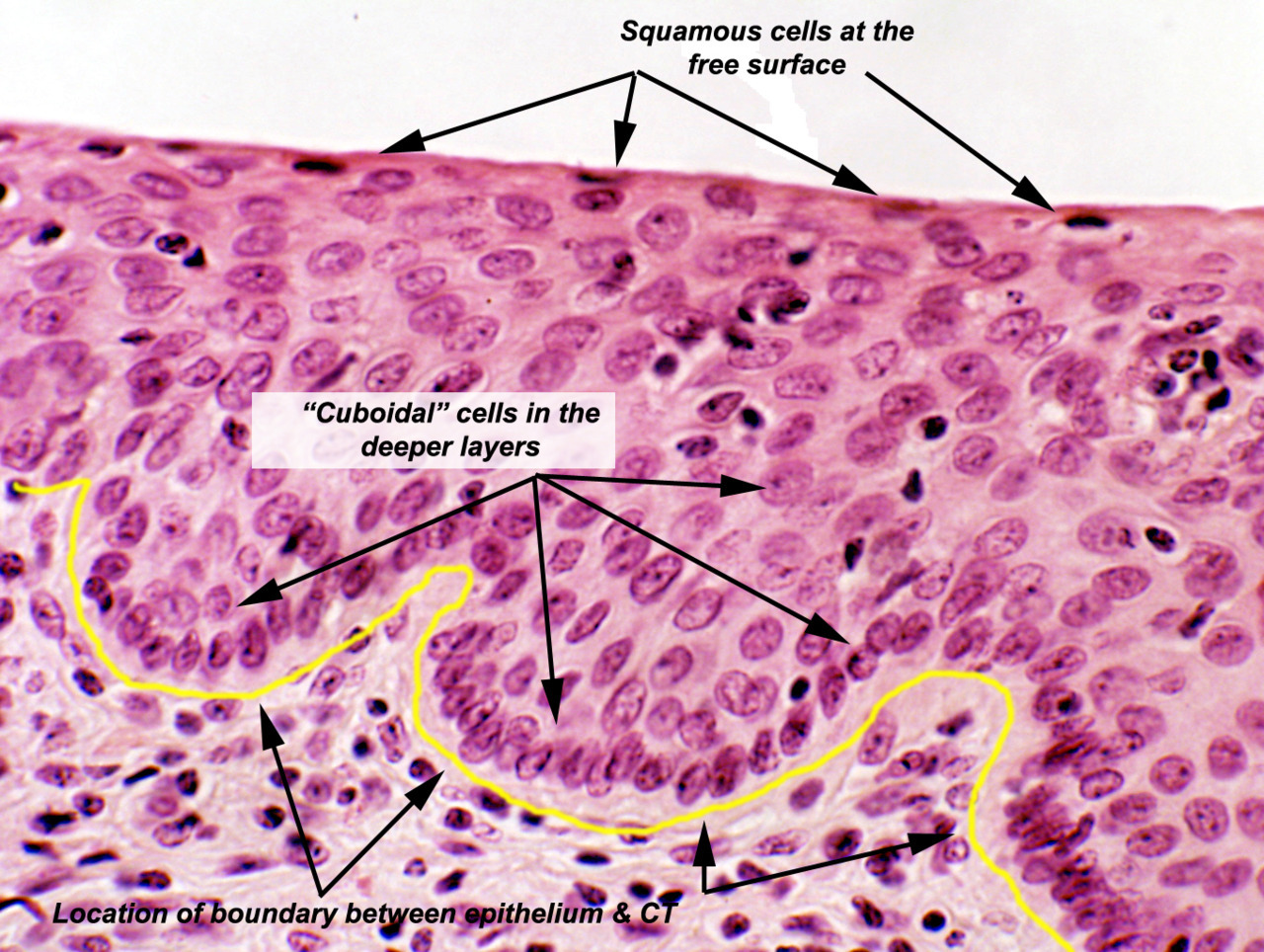Stratified squamous epithelium is a fascinating and vital component of the human body, playing crucial roles in protection and sensation. This article delves into the intricacies of this tissue, exploring its structure, function, and significance in maintaining health.
Key Takeaways

- Stratified squamous epithelium is a multi-layered tissue primarily involved in protection.
- It is found in areas subject to abrasion, such as the skin, mouth, and esophagus.
- This epithelium can be keratinized or non-keratinized, adapting to different environmental challenges.
- Its structure allows for both flexibility and strength, essential for protecting underlying tissues.
What is Stratified Squamous Epithelium?
Stratified squamous epithelium is a type of epithelial tissue composed of multiple layers of cells. The term “stratified” refers to the layered arrangement, while “squamous” describes the flattened shape of the cells at the surface. This tissue is designed to withstand mechanical stress and is found in regions of the body that experience significant wear and tear.
Structure of Stratified Squamous Epithelium
The stratified squamous epithelium consists of several layers:
- Basal Layer: The deepest layer, where cells are actively dividing. These cells are cuboidal or columnar in shape and provide a continuous supply of new cells to replace those shed from the surface.
- Intermediate Layers: As cells move upward, they become more flattened and squamous in shape. These layers provide structural support and act as a buffer against mechanical damage.
- Surface Layer: The outermost layer consists of flattened, dead cells that are continuously sloughed off and replaced. In keratinized epithelium, this layer is rich in keratin, a protein that provides additional protection.
Types of Stratified Squamous Epithelium
There are two main types of stratified squamous epithelium, each adapted to specific functions and locations:
- Keratinized Stratified Squamous Epithelium: Found primarily in the skin, this type contains a tough, protective layer of keratin. It prevents dehydration and offers a barrier against pathogens and physical abrasions.
- Non-Keratinized Stratified Squamous Epithelium: Present in moist areas such as the oral cavity, esophagus, and vagina, this type does not have a keratin layer. It provides protection while maintaining moisture to facilitate functions like swallowing and sexual intercourse.
Functions of Stratified Squamous Epithelium
The primary function of stratified squamous epithelium is protection. It acts as a physical barrier against environmental hazards, including:

- Mechanical Injury: The multiple layers absorb and dissipate forces, protecting underlying tissues from damage.
- Pathogen Invasion: The tightly packed cells form a barrier to bacteria, viruses, and other pathogens.
- Dehydration: In keratinized epithelium, the keratin layer reduces water loss, maintaining hydration levels in the skin.
Beyond protection, stratified squamous epithelium also plays a role in sensation. The skin, for instance, contains nerve endings that detect touch, temperature, and pain, providing essential sensory feedback.
Importance in Health and Disease
The health of stratified squamous epithelium is vital for overall well-being. Damage or dysfunction can lead to various conditions:
- Skin Disorders: Conditions like psoriasis and eczema affect the keratinized epithelium, leading to inflammation and discomfort.
- Oral Health Issues: Non-keratinized epithelium in the mouth can be affected by infections, ulcers, and cancers.
- Esophageal Disorders: Damage to the esophageal lining can result in conditions like GERD (gastroesophageal reflux disease) and Barrett’s esophagus.
Maintaining Healthy Stratified Squamous Epithelium
Ensuring the health of stratified squamous epithelium involves several strategies:
- Proper Nutrition: A balanced diet rich in vitamins A, C, and E supports skin health and repair.
- Hydration: Adequate water intake helps maintain moisture levels, especially in non-keratinized areas.
- Sun Protection: Using sunscreen protects keratinized epithelium from UV damage.
- Regular Check-Ups: Routine examinations can detect early signs of disorders affecting stratified squamous epithelium.

Stratified squamous epithelium is a remarkable tissue, essential for protecting the body from external threats and maintaining internal balance. Its unique structure and functions underscore its importance in health and disease. By understanding and caring for this tissue, we can enhance our overall well-being and prevent various health issues.
Whether it’s the resilient skin that shields us from harm or the delicate lining of the mouth that facilitates communication and nutrition, stratified squamous epithelium plays a pivotal role in our daily lives. By appreciating its complexity and significance, we can better protect and support this vital component of our anatomy.
